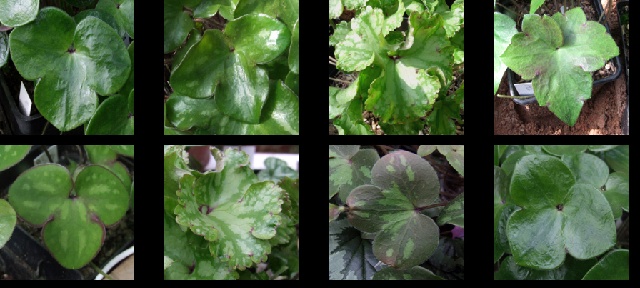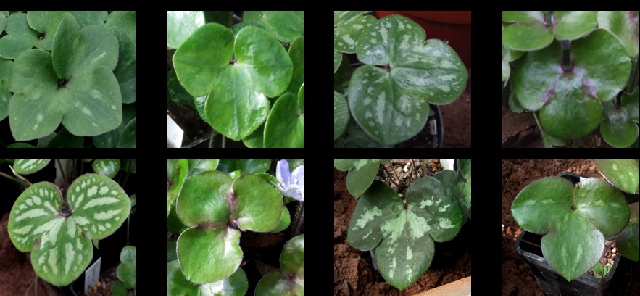Midland Diary No 10 Hepatica gallery
I have a sizeable collection of hepaticas. It started in a manageable way, several years ago, with half a dozen or so species and colour forms which I put out in a shady spot in the garden. They never did well, mainly because the buds were often eaten by slugs, or other pests, so there were rarely any flowers. After attending a lecture on hepaticas by John Massey I learnt that it was possible to grow them in pots, and it was a good way to appreciate the variety of forms and colours. So they were lifted from the garden, and potted up. Gradually the collection grew, partly due to swapping and seed raising. Now I have far too many to look after them properly, so now I am planning to return some to the garden.
In the late autumn, I move them into a light spot in the alpine house and remove all the old leaves. These are hairy and so absorb moisture and thereby can be a source of botrytis. Also, if the old leaves are left, the flower stems will elongate over the old leaves and the plant can become very leggy. In the alpine house they are a delight in late winter and early spring, bright little jewels on a dull day.
This diary entry is a celebration of the variety of colours and forms of hepatica. Hepaticas are In Japan the hepatica is called Yukiwariso, which means “breaking through the snow” as there, as in parts of Scandinavia, it is regarded as a harbinger of spring.
Hepaticas are big business in Japan, and new cultivars can change hands for the equivalent of thousands of pounds. They divide the types into several groups, depending on flower form. The Japanese names following are the names of the groups, and not cultivar names.
Single types
‘Hyoujunka’ normal single flower
‘Otome-zaki’ single flower, with no stamens, the European and American forms like this are called maiden forms
Row 1 left to right:

Row 2 left to right:

Row 3 left to right:

Some pinks and whites
Row 4 left to right:

Row 5 left to right:

Double types
I am not usually a fan of double flowers, but some of these are very beautiful
Row 6 left to right:

Row 7 left to right:

Row 8 left to right:

Whilst the flowers are opening, the new leaves start to unfurl and some of these have an incredible glossy sheen. This sheen fades through the summer. The form of Hepatica nobilis from the Pyrenees often have marbled leaves.
Some leaf forms:


At this time of year, most of the Hepaticas are finishing flowering and may be setting seed. Hepatica seed is ripe whilst still green and can be difficult to collect.
This picture shows the seeds which form as achenes. These remain green and the main sign that they are ripe is when they drop off, so this makes it difficult to collect.
As the seed ripens, the flower stem bends down and is likely to drop its seed into the neighbouring pot.
So, in order to catch the seed and stop it from dropping in an unknown pot, I have evolved a crazy looking method. Firstly, tea bags are saved for several weeks. The corners are cut off, the tea removed and the bags are dried flat. Several fruiting stems are inserted into the bags and tied at the top. It looks odd, but it works. I used to use little pieces of fleece but the mice nibbled through them. The tea bag method is more successful as I presume they don't think they like the taste of the tea!
Some plants need up to 6 tea bags, each taking several stems. The seed will take about 4 - 6 weeks to ripen and then it will need to be sown as soon as possible. More about that when the time comes
If you have any comments about this Midland Diary Entry, you can post your contributions here:
http://www.alpinegardensociety.net/discussion/midland/+April+Midland+Diary+No+Hepatica+gallery/227/